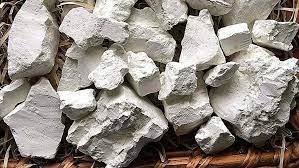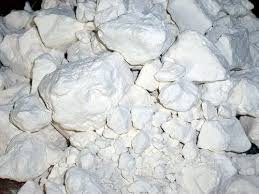The Future of Kaolin: Trends and Innovations in Clay Technology
Kaolin clay technology has undergone stunning developments over recent years. This article takes an in-depth look into its future development by looking into key trends and innovations impacting this sphere.
Discover the future of kaolin with evolving trends and innovations in clay technology. As the demand for high-quality kaolin continues to rise, a key player in this landscape is the trusted kaolin manufacturer company. Pioneering advancements in extraction, processing, and application techniques, these companies are reshaping the industry. With their dedication to quality and sustainability, these suppliers ensure an uninterrupted supply of premium kaolin for various sectors. Stay ahead in clay technology by aligning yourself with an innovative producer offering superior products and processes; discover transformative opportunities waiting ahead with partners dedicated to offering superior kaolin solutions.
What is Kaolin?

Kaolin (commonly referred to as china clay) is an abundant white clay extracted from Earth’s crust that has long been prized for its unique properties and multiple uses across industries. Notable examples include ceramics, paper production, cosmetics and pharmaceutical production as it plays an integral part in these sectors as well as its abundant source and various applications that contribute to economic and technological advances across multiple fields.
Current Applications of Kaolin
Traditional Uses of Kaolin
Kaolin has long been recognized for its essential role in creating ceramics and porcelain products. Renowned for its fine particle size and pure white hue, this mineral makes an excellent choice when producing high-quality pottery or delicate porcelain products. Furthermore, its long history of use as a craft medium highlights its value as an artistic material that also has practical applications.
Kaolin in Paper Industry
Kaolin has had a profound influence on the paper industry through its role as both filler and coating material. Due to its fine particle size and exceptional brightness, kaolin contributes greatly to improving paper products by increasing density, opacity, printability and smoothness. Furthermore, its widespread usage demonstrates its critical contribution towards upping standards of production thus leading to smoother, brighter and higher-quality papers products in the market.
Kaolin in Pharmaceuticals
Kaolin is an integral ingredient for medicine formulation. Due to its fine particle size and purity, kaolin serves as an excipient that allows binding/disintegration properties in tablet formulas as well as providing antidiarrheal relief medication to treat intestinal ailments. With so many applications within healthcare industries today, kaolin remains essential in upholding both quality and efficacy in medicine creation processes.
Trends Shaping the Future

Sustainable Mining Practices
The future of Kaolin involves a shift towards sustainable mining practices, minimizing environmental impact and promoting responsible extraction methods.
Nanotechnology Integration
Kaolin has emerged as a central theme in nanotechnology research and an emerging trend. Researchers are actively investigating its potential for creating advanced materials and structures at the nanoscale by capitalizing on its unique properties – fine particle size and versatility in particular – opening avenues for innovative nanotech applications. This exploration marks an impressive step in material science research as well as opening up avenues for breakthrough materials development that push beyond existing boundaries and pave the way towards cutting-edge developments in material science research and material developments in material science research and innovation.
Kaolin in 3D Printing
Kaolin clay shows remarkable adaptability when applied to 3D printing technology, becoming an essential component for crafting intricate structures with pinpoint precision. Due to its fine particle size and versatility, kaolin makes an excellent material choice that contributes to creating advanced 3D-printed objects. Kaolin’s place within this technology also showcases its adaptability; not only serving traditional industries like ceramics and pharmaceuticals but also finding unique applications within cutting-edge fields like 3D printing which push the limits of design and manufacturing precision.
Innovations in Kaolin Technology

Advanced Processing Techniques
Innovations in processing techniques are improving Kaolin purity and quality, making it even more suitable for various industries.
Bio-inspired Applications
Kaolin is seeing a surge of biomimetic applications, with researchers drawing inspiration from nature to develop innovative uses for this versatile clay. Due to its adaptability and unique properties (such as fine particle size) as well as biomimicry studies. From mimicking natural structures to creating bio-inspired materials based on it – all thanks to Kaolin! These endeavors demonstrate Kaolin’s potential as an ingredient that bridges traditional industries with emerging bio-inspired technologies.
Kaolin-Based Energy Storage
The integration of Kaolin in energy storage solutions is a groundbreaking innovation, offering a sustainable alternative in the field of battery technology.
Future Challenges and Solutions

Overcoming Impurities
Challenges related to impurities in Kaolin are being addressed through advanced purification methods, ensuring the clay meets stringent quality standards.
Market Expansion Strategies
As demand for Kaolin continues to grow, companies are adopting strategic approaches to expand their market presence and meet evolving customer needs.
Global Impact of Kaolin
Economic Implications
Kaolin’s increasing importance is not only technological but also economic, with its mining and processing contributing to regional and global economies.
Environmental Considerations
The environmental impact of Kaolin extraction and processing is a critical consideration, leading to the development of eco-friendly practices.
FAQs about the Future of Kaolin

Is Kaolin extraction harmful to the environment?
The industry is actively adopting eco-friendly practices to minimize environmental impact.
How is Kaolin used in 3D Printing?
Due to its fine particle size and unique properties, kaolin makes an excellent material for creating intricate structures using 3D printing technology.
What are the economic repercussions of Kaolin industry growth?
Kaolin production has made significant contributions to both regional and global economies over recent years.
Could Kaolin be used as energy storage material?
Yes, Kaolin has great potential as an energy storage material, offering sustainable alternatives in battery technology.
Are there any impurity issues related to Kaolin?
Innovative purification techniques are being utilized to address issues related to impurities in Kaolin, ensuring high-quality standards are maintained.
Conclusion
As we progress into the future, Kaolin’s influence in shaping clay technology cannot be denied. From traditional applications to cutting-edge innovations, its use continues to expand across industries – opening doors of opportunity.



